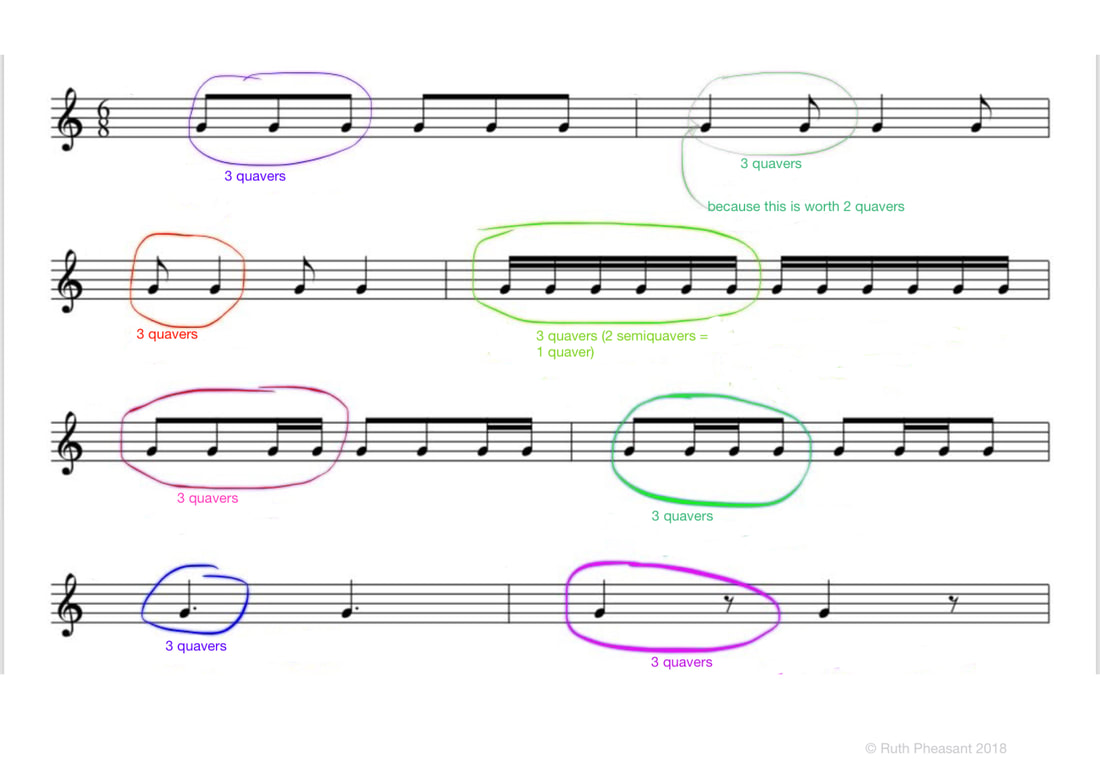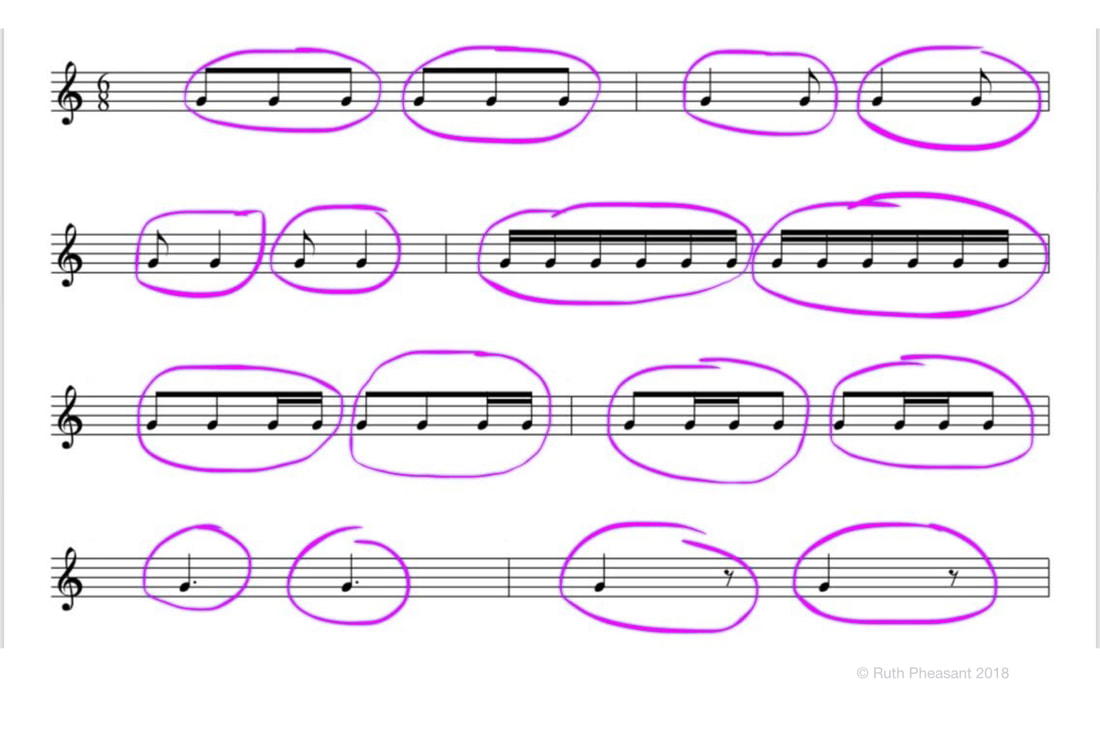The top number of a time signature tells us how many beats are in each bar. The bottom number tells us what kind of beats (or what kind of note gets one count).
In 2/4 the top number tells us there are 2 beats in each bar, the bottom number tells us they are crotchet beats (or quarter notes), so a crotchet gets one count. So 2/4 means two crotchets in each bar (or whatever adds up to two crotchets in each bar). 2/4 is an example of duple simple time. Duple because there are two beats. Simple time means each beat is divisible by two, i.e. you can divide a crotchet into two quavers. More examples of simple time are:
In 6/8 the top number tells us 6 beats. The bottom number tells us those beats are quaver beats (or eighth notes), so a quaver gets one count. So in 6/8 there are six quavers in each bar (or equivalent). However that’s not all, this is a more complex time signature. The quavers must be arranged into two groups of three or equivalent like the following examples in this picture:
In 2/4 the top number tells us there are 2 beats in each bar, the bottom number tells us they are crotchet beats (or quarter notes), so a crotchet gets one count. So 2/4 means two crotchets in each bar (or whatever adds up to two crotchets in each bar). 2/4 is an example of duple simple time. Duple because there are two beats. Simple time means each beat is divisible by two, i.e. you can divide a crotchet into two quavers. More examples of simple time are:
- 3/4 - three crotchet beats in each bar. This is simple triple time.
- 4/4 - four crotchet beats in each bar. This is simple quadruple time.
- 2/2 - two minim beats in each bar. The two at the bottom of the time signature means minim beats. This is another example of simple duple time.
- 3/2 - three minim beats in each bar - simple triple time.
- 4/2 - four minim beats in each bar - simple quadruple time.
- 3/8 - three quaver beats in each bar. The eight at the bottom of the time signature tells us that the beats are quavers. This is simple triple time.
- 4/8 - four quaver beats in each bar - simple quadruple time.
In 6/8 the top number tells us 6 beats. The bottom number tells us those beats are quaver beats (or eighth notes), so a quaver gets one count. So in 6/8 there are six quavers in each bar (or equivalent). However that’s not all, this is a more complex time signature. The quavers must be arranged into two groups of three or equivalent like the following examples in this picture:
Each coloured ring shows a group of notes that add up to three quavers.
The following picture shows the two groups of three quavers in each bar:
6/8 is also thought of as two dotted crotchet beats in each bar. The emphasis and feel should be of two in a bar, and each half of the bar is divided into three parts. Think of the dotted crotchets as the “main beats”, and the quavers as the “sub beats”. 6/8 is a form of compound time - which is where the main beats (in this case dotted crotchets) divide into three. 6/8 is duple time because there are two main beats (two dotted crotchets). So 6/8 is an example of compound duple time. (Compound because each “main beat” can be divided into three “sub beats”.) In the picture above, the coloured rings show where the dotted crotchet beats occur.
More examples of compound time include:
- 9/8 - nine quavers in each bar, or three dotted crotchets in each bar. This is compound triple time.
- 12/8 - twelve quavers in each bar, or four dotted crotchets in each bar. This is compound quadruple time.
- 6/4 - six crotchets in each bar, or two dotted minims in each bar - compound duple time again.
- 9/4 - nine crotchets in each bar, or three dotted minims in each bar - compound triple time again.
- 12/4 - twelve crotchets in each bar, or four dotted minims in each bar - compound quadruple time again.
- 12/16 - twelve semiquavers in each bar, or four dotted quavers in each bar - another example of compound quadruple time,
Etc.

